RECOMMENDED
by

Ladakh
Mountains, Monasteries and Monks
Ladakh
Your Journey
In a country of a billion and half and still counting, Ladakh is one of those rare places where people are few and far between. While high passes and spectacular mountains dominate the region, it is also a place that speaks of the thousands of years that travelers, craftsmen, preachers and nomads have come upon. A jewel in the crown of India, Ladakh not just amazes with its landscape and people, but also hides unique wildlife. While many passes make up Ladakh’s stunning landscape yet experiencing a place like this is bound to leave every traveler breathless both spiritually and by altitude.
Though Buddhism is central to this part of the world, and uniformity of barren high-altitude mountains are constant, yet subtle differences between landscapes, people, history and wildlife in niches can throw up many surprises. From high passes, to border villages, secretive wildlife, to ancient monasteries and ruins, this journey takes you not just into Ladakh and its remoteness but also into insights of how fragile it still is environmentally and geographically. Yet, every step and every drive add to experiences unmatched and incomparable.

wildlife

adventure

habitat

tribes

conservation
Unique Experiences
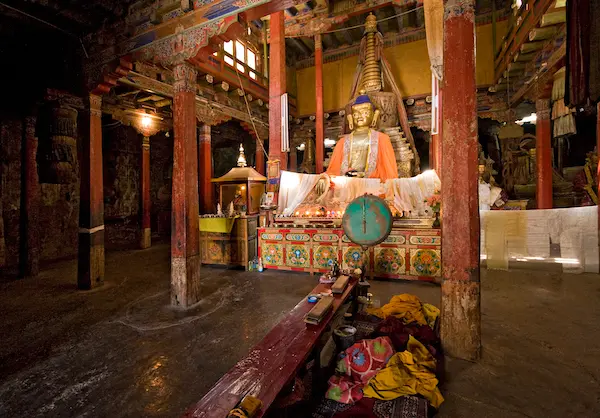
Visit ancient monasteries, ruins and forts that speak of beliefs and lives of yesteryears.
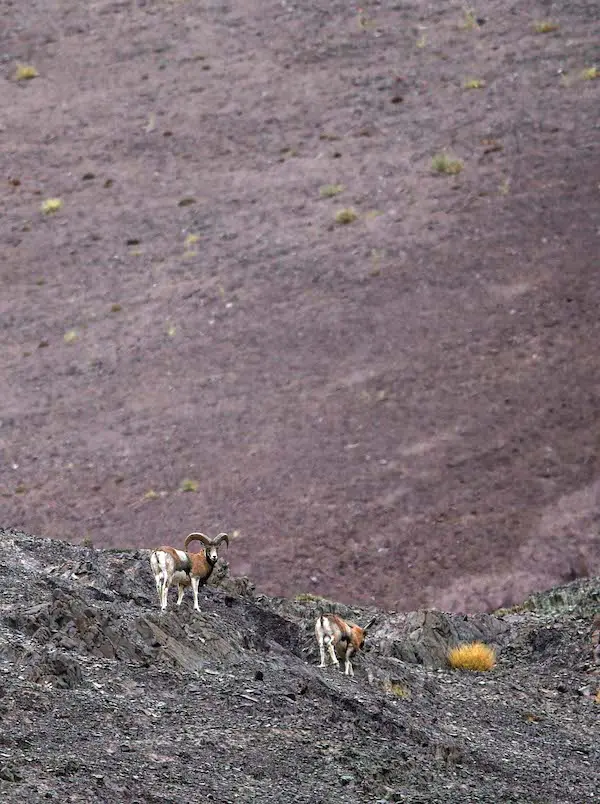
Glimpse rare wildlife in the trans Himalayan region and a biodiversity hotspot.
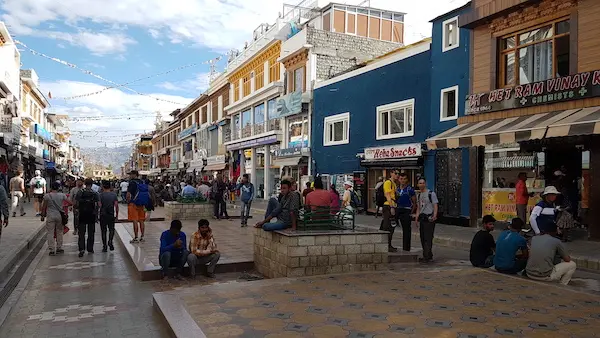
Walk through the modern bazaars of Leh which was once a bustling stopover on ancient trade routes.
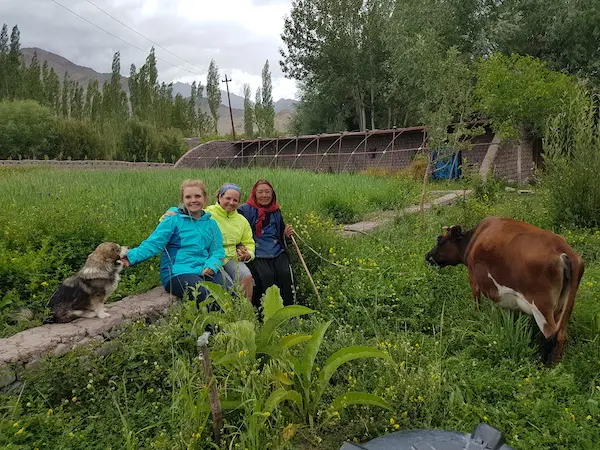
Explore the villages around Nubra, Nurla and Stok to learn about the Ladakhi culture, cuisine, and their way of life.
Itinerary Snapshot
Day 1
Fly To Leh, Drive To Nurla
On a clear day, a window seat on the flight to Leh is the best place to view the rugged peaks of Ladakh and experience a spectacular landing. On arrival in Leh you will met and driven for approximately 2 hours to arrive at your hotel in Nurla. Today is about rest and acclimatation to the high altitude.
At sunset, take a leisurely stroll through the apricot orchards or down to the banks of the Indus River.
Day 2
In Nurla
A short drive takes you to Alchi village. Visit the Alchi Monastery, with very distinct in architecture with beautifully carved wooden façade, fine wall paintings. Savor a Ladakhi fusion lunch as you interact with a local chef.
Visit the moonscapes of Lamayuru and the monastery, one of the oldest in the region.
Day 3
To Stok
Enjoy a moderate hike along the stream to the hamlet of Tar. Drive to Stok (2 hours’ approx.) and check in at the hotel. Enjoy a tour of Stok Palace, a family heritage of over 200 years.
Day 4
Stok
Rise early to attend morning prayers at Matho monastery - a Sakya sect monastery. Also, walk through the recently restored monastery museum. Enjoy a local Ladakhi breakfast in a farm.
Explore Stok’s sleepy hamlet that portrays the typical everyday life of a quiet Ladakh.
Lunch will be at a heritage house.
Optional: Ride on a bicycle or motor bike to Matho Monastery followed by a picnic lunch.
Day 5
To Nubra Valley Via Wari La Pass
A 4 hours’ journey takes you to Nubra valley. En route, Wari La is a beautiful valley where high barren mountains meet green pastures for a brief moment. Use this pass and spend some slow time to have your encounters with high altitude wildlife including multiple Marmots, Woolly Hare, Pikas, Bearded Vultures and Golden Eagles.
On arrival in Nubra, check-in at the scenic retreat.
Hike to the village of Tegar or walk to Sumoor sand dunes to see the Bactrian camels.
Day 6
Nubra Valley
Visit Diskit Monastery, a dramatically perched monastery, the oldest in the region. Walk around Sumoor or by the banks of Nubra River to spot Larks, Pipits, Bearded Vultures, Golden Eagles and other avian fauna.
For the adventurous, there is a heritage walk along Maney Ringmo, a 300-year-old stone wall and Zanskhang Palace or visit the Murgi Village for the rich sites of rock paintings and other ruins.
Packed picnic lunch by a stream or in the gardens of Ensa gompa can be arranged.
In the evening, take a walk up to Samstanling monastery to witness monks learning through debate.
Day 7
To Leh
Drive to the base of Trisha Tso (lake), followed by a short, 20-minutes hike to reach the holy lake. Later, drive to Leh for 4 hours via Wari La pass. Enjoy a packed picnic lunch in a village by a stream.
Day 8
In Leh
Step out to explore Leh town. Visit the white dome shaped Shanti Stupa, get an insight into the history of Ladakh and surrounding region on a visit to Central Asian Museum. See the nine-storey Leh Palace and visit the LAMO Centre - Ladakh Arts & Media Organization. From here walk through the old city area ending at the central market.
Day 9
In Leh
Just before the sunrise, you will drive short distance to Thiksey Monastery for the morning prayers followed by breakfast with monks. Drive out about 45 minutes to explore the jewel in the crown of the Drukpa lineage, Hemis Monastery, the biggest monastic institution of Ladakh. Later, see the Shey Palace, once a summer palace, it is mostly in ruins today. Make a brief visit to SECMOL, an alternate school that teaches kids sustainable living through life skills apart from modern academics.
Day 10
Fly To Delhi
Pack your suitcases with the souvenirs you picked up along the way as you drive to reach the Leh airport for your flight to Delhi.
Subscribe to exclusive itineraries by WATCH.
RECOMMENDED
Stays
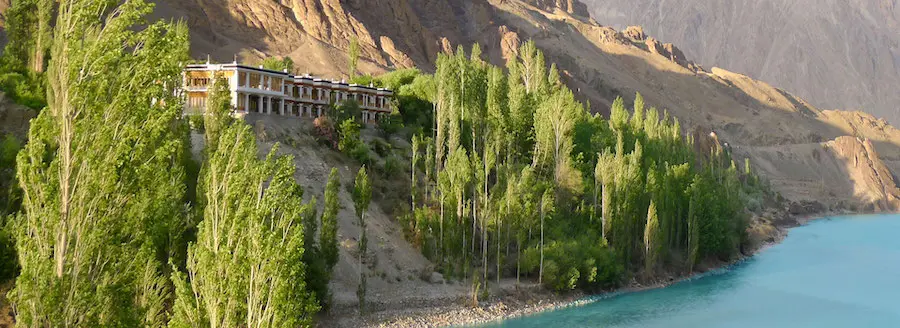
WILDERNESS
The Apricot Hotel, Nurla
The Apricot Tree is tucked away on the outskirts of Nurla village and is a ninety-minute drive from Leh airport. Located just off the Leh-Srinagar highway and perched on a cliff overlooking the Indus River, the hotel offers sounds and views of the river, the wonderful mountain air and is set amidst apricot and apple trees.
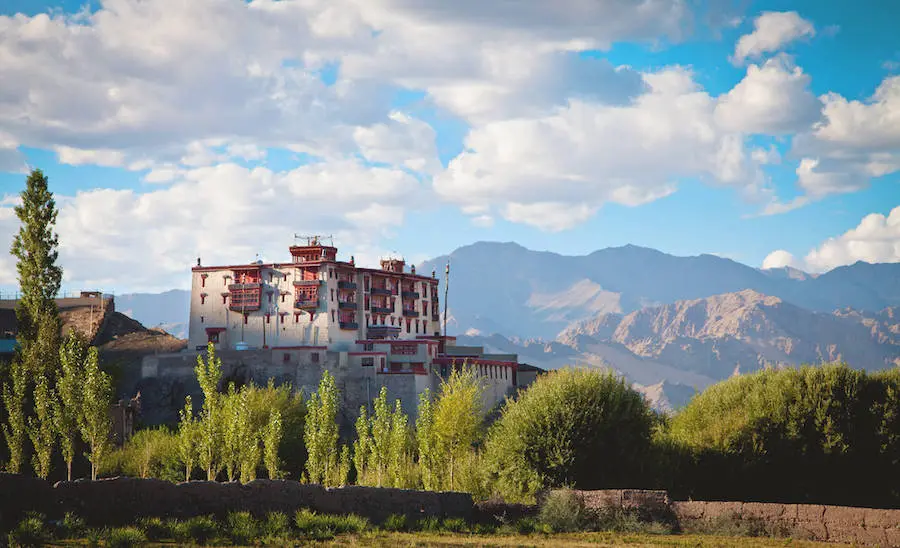
UNDERSTATED LUXURY
Stok Palace, Stok
Stok Palace, built by King Tsespal Tondup Namgyal in 1825, is the present-day residential palace of the royal descendants of King Sengge Namgyal. The architecture of this palace is a perfect mix of the traditional and the contemporary styles. This palatial property consists of several beautiful gardens as well as a library that has around 108 volumes of the Kangyur (a collection of teachings of Lord Buddha). The current heir of the Namgyal dynasty has opened his palace. Interact with royalty, as you experience regal living at the Stok Palace.
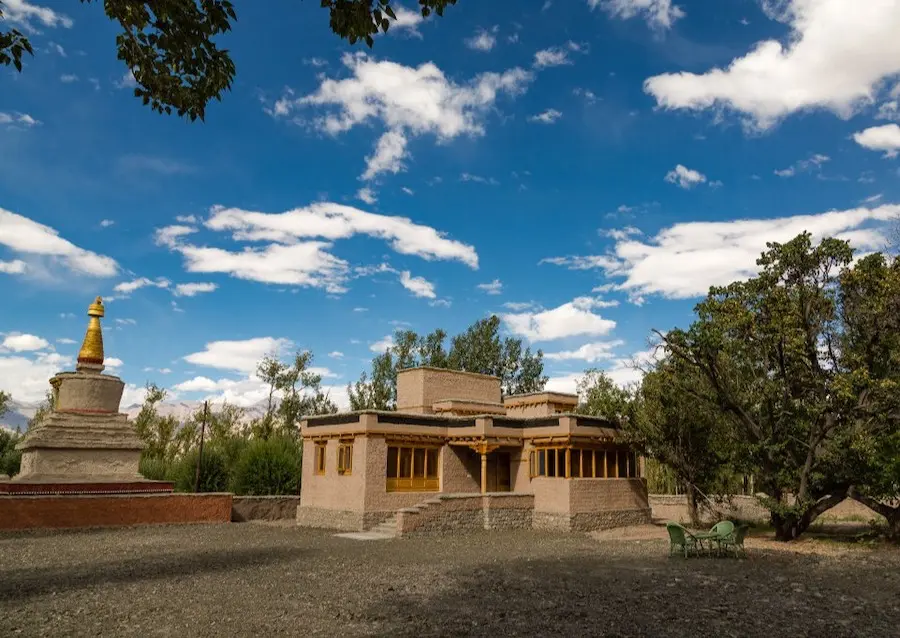
CONSCIOUS LUXURY
Chulli Bagh Heritage Villas, Stok
Chulli Bagh literally means ‘garden of apricots’. The charming ash, stone, wood and glass cottages are set in orchards of apricot, walnut, apple and willow trees. Experience the apricot blossoms in April, the autumn leaf-fall in October, and the stark skeletal trees in winter - an everchanging canvas of seasons and splendor. Explore the nearby monasteries and offer prayers at the chalky chortens, enjoy high tea around the warm kitchenette or traditional woodfire dinner under starry skies.
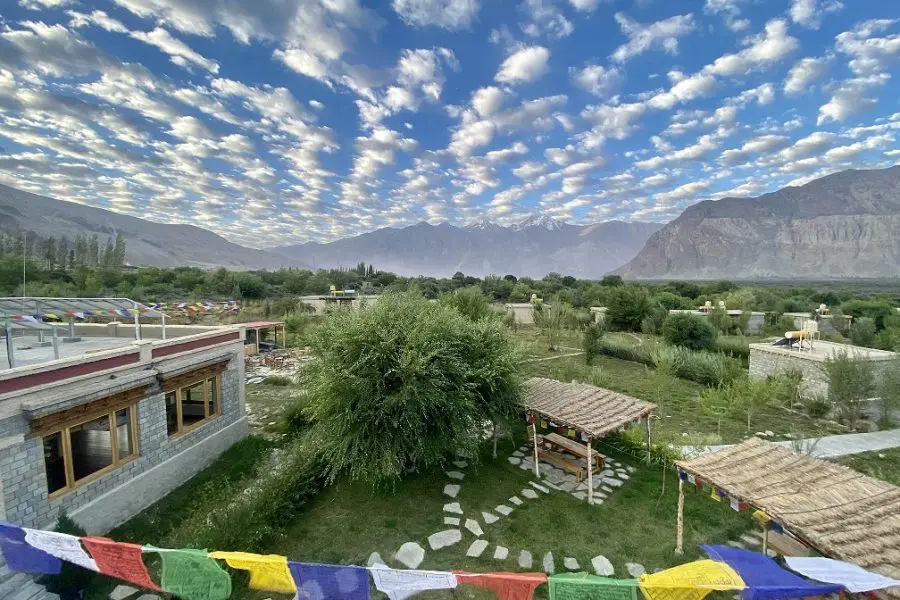
UNDERSTATED LUXURY
Lchang Nang Retreat, Nubra
Literally meaning the ‘house of trees’, Lchang Nang is peaceful little retreat set amidst an orchard of elm, apricot, and apple trees, with the perennial Siachen River running along its western boundary. Open from May to mid-October, Lchang Nang in Sumoor village is a short distance from the town of Diskit - and can be a great vantage point to take in Nubra valley’s monasteries, wildlife, culture, and adventure activities.
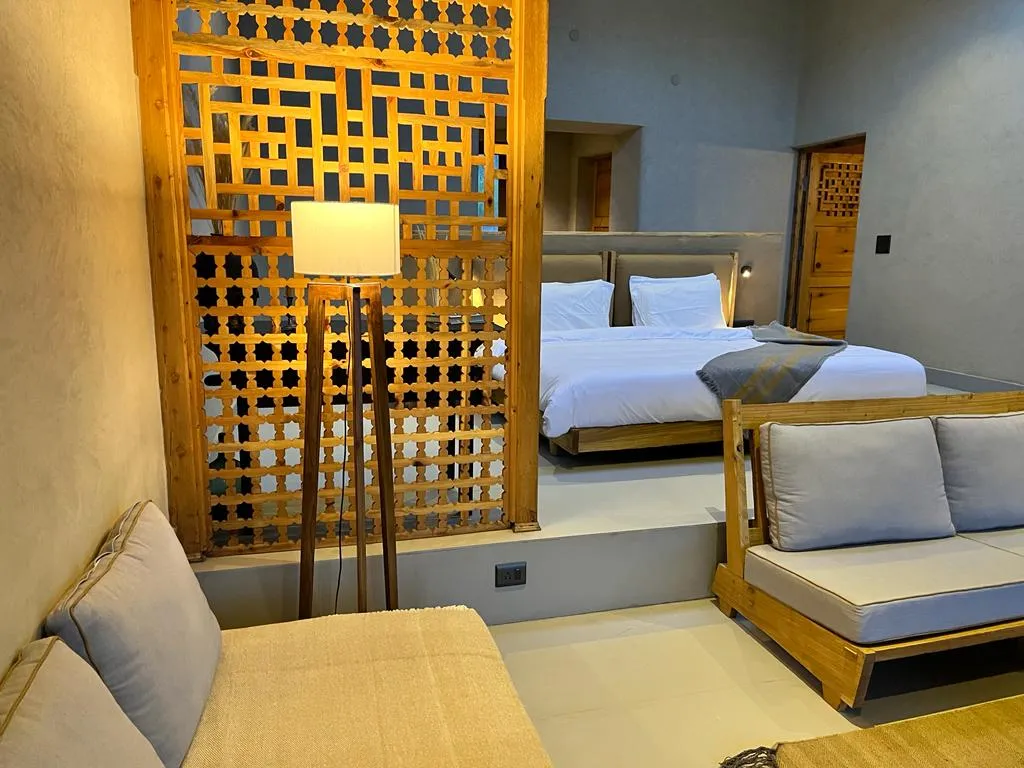
UNDERSTATED LUXURY
Kyagar Hotel, Nubra
Located in Sumoor, this 16 keys property is solar-powered and the food, locally sourced. Kyagar is where owner Rinchen Kalon’s ancestors long ago welcomed traders who braved the peaks and valleys of Himalayas to cross over Ladakh. The property comprises of eight cottages, each with two rooms that come with a seating area, large washroom and a private sit-out with stunning views. Kyagar’s rooms are finished with multani mitti and red clay from Basgo village and so are the carpets that are locally woven, following the local traditions and arts.
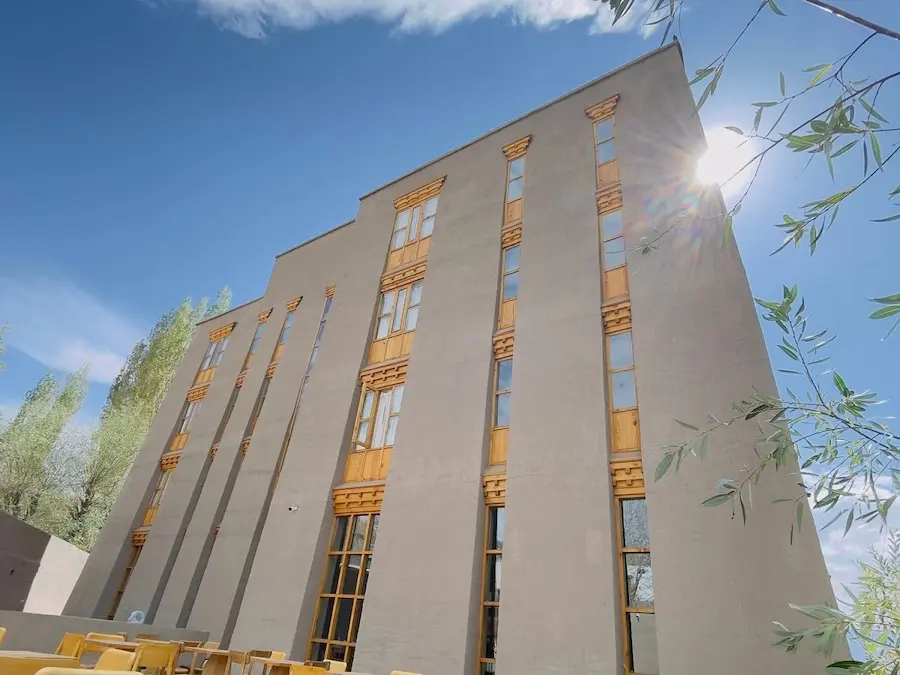
UNDERSTATED LUXURY
The Chospa Hotel
Situated on the Old Leh Road, is The Chospa Hotel - built in a traditional Ladakhi style of construction. Molded using sustainable raw materials and locally sourced local wood, the hotel features 17 rooms interpreting an ambience familiar to locals and unique for visitors. Savor Ladakhi & Tibetan flavors at their restaurant, along with a curated continental menu.
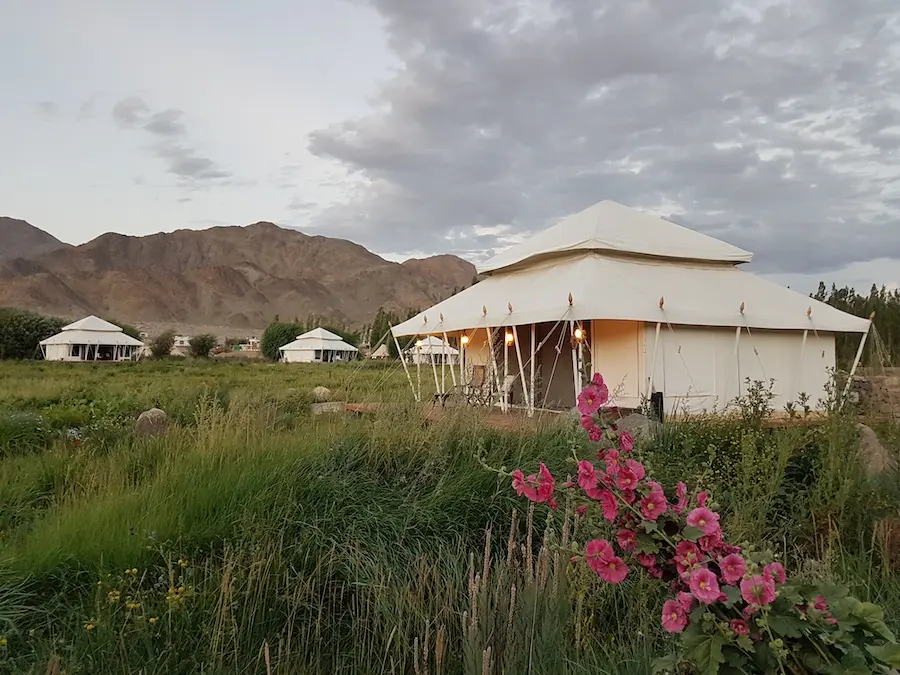
UNDERSTATED LUXURY
The Chamba Camp, Thiksey
With panoramic views of the snow-capped mountains, the Chamba Camp near Thiksey is set up near ancient monasteries with their fluttering Tibetan prayer flags, surrounded by nomadic tribal villages of Pashmina goat herders, offering the perfect glamping experience! Whether you’d like to trail past Buddhist monasteries or raft down the river Indus, practice yoga on mountaintops or enjoy picnic lunches near farming villages – the TUTC-Thiksey is your window into life in the Himalayas.
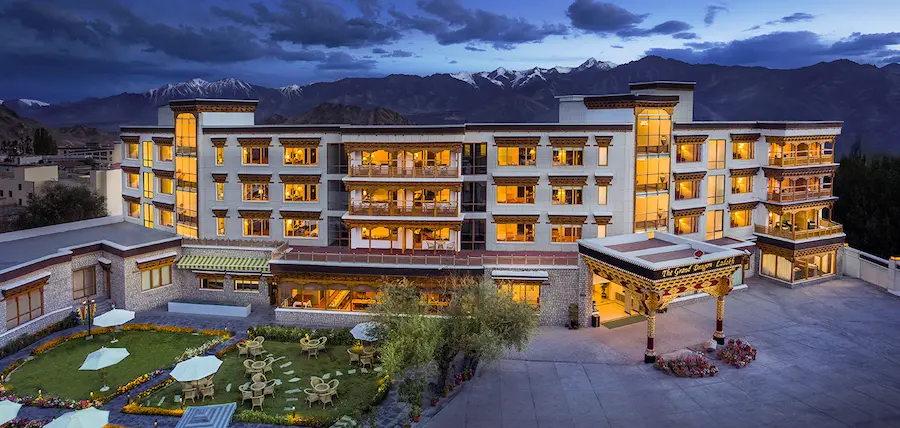
CONSCIOUS LUXURY
Leh – Grand Dragon Hotel
Leh’s only star-rated hotel, the Grand Dragon is a luxury hotel a short distance away from the main markets. The Grand Dragon is centrally heated, solar powered, with state-of-the-art amenities from lounges to restaurants, an indoor gym and conference space – making it a great all-year-round accommodation. Apart from the hospitality and the food, the Grand Dragon’s highlight are the beautiful paintings by Gulam Mustafa – a Ladakhi painter, and the regal fixtures, that lend charm and character to this modern endeavour.
RECOMMENDED
by
